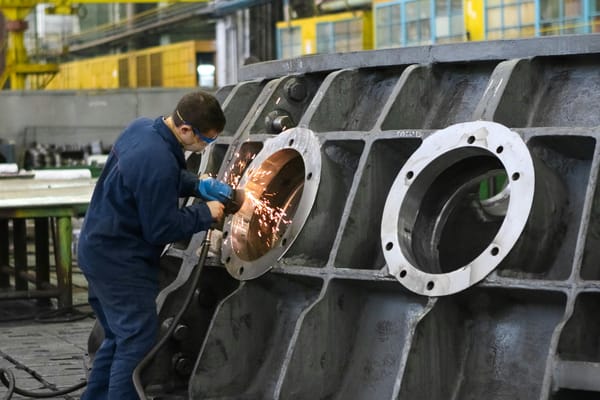A Crisis of Scale in Advanced Manufacturing
A wave of new industrial capacity has swept through next-gen manufacturing. Battery gigafactories, solar panel plants, and semiconductor fabs have proliferated, fueled by unprecedented public and private capital. The intent was clear: reduce dependencies, drive innovation, and lead the clean energy transition.
But scale has outpaced sense.
As 2025 unfolds, the sector is at risk of a sharp market correction. Supply is already outpacing demand, raising the risk of price wars, margin compression, and financial instability. If trends continue, a shakeout is likely, and only the most strategically positioned companies will emerge stronger.
This isn’t a distant concern: it’s already unfolding. Those who act now will have the advantage.
The Risks of Ignoring the Overcapacity Threat
Overcapacity does not appear as a single crisis but as a gradual erosion of profitability, competitiveness, and supply chain efficiency. Several risks stand out:
- Margin Squeeze & Price Wars: With production capacity exceeding demand, expect more aggressive price-cutting. Battery pack costs fell 20%1 last year alone, and solar panel prices dropped nearly 50%2 due to excess supply. Semiconductor firms could soon face similar pricing pressures.
- Financial Instability & Market Shakeouts: Companies that expanded aggressively may struggle to remain viable if utilization rates fall. Overleveraged new entrants are particularly vulnerable, with a wave of bankruptcies or consolidations likely.
- Geopolitical & Policy Uncertainty: Government incentives fuelled expansion, but shifting policies, whether in trade, tariffs, or local content rules, could create volatility and reshape competitive dynamics.
- Supply Chain Distortions: Redundant production facilities, built to hedge against geopolitical risks, are now adding to global oversupply. This misalignment is already affecting industries like semiconductors and EV batteries.
With multiple forces converging, waiting to see how conditions unfold is no longer an option. A deliberate, forward-looking strategy is essential.
Why This Problem Matters Now
Traditional approaches to overcapacity, simply waiting for demand to catch up, are insufficient. Several factors are accelerating the risks:
- The Global Demand Mismatch: EV adoption has slowed in key markets. Inventory levels in the U.S. climbed to over 100 days’3 supply by late 2023, more than double the industry norm. Solar installation rates in some regions have also tapered off4, even as factories produce at full capacity.
- China’s Manufacturing Dominance: China’s production scale reshapes global competition. In batteries alone, capacity is now five times the projected demand5, intensifying the likelihood of price wars.
- Capital Market Pressures: The era of cheap capital began fading in 20226, as central banks raised rates to fight inflation. Borrowing costs have remained elevated since, tightening funding conditions and shifting investor expectations. Growth-at-all-costs is no longer rewarded.
- Profitability and capital discipline are now front and center. Companies that haven’t adjusted may find it increasingly difficult to secure financing on favorable terms.
Ignoring these trends isn’t an option. The path forward requires a shift from expansion-driven thinking to strategic discipline.
A Strategic Path Forward
The shift from rapid expansion to disciplined growth is already underway. Those who get ahead of it will define the next phase of the industry. Key areas of focus include:
- Selective Capacity Investments: Prioritizing high-utilization facilities and rethinking expansion plans to avoid underperforming assets.
- Cost Leadership & Efficiency Gains: Leaner operations, automation, and supply chain optimizations will separate sustainable businesses from those trapped in a race to the bottom.
- Strategic Partnerships & Differentiation: As pricing power shifts to buyers, companies must offer more than just capacity. Exclusive contracts, integrated solutions, and specialized offerings will create a competitive advantage.
- Scenario Planning for Policy & Market Shifts: The policies that drove expansion are evolving. Building agility into decision-making will help companies respond before shifts become disruptions.
Next Steps
Overcapacity is not a distant risk as it is already unfolding. The companies that act decisively now will emerge more assertive, while those that assume the market will correct itself risk losing ground.
The most effective way forward is to:
- Assess Capacity & Utilization – Identify potential inefficiencies before they become financial liabilities.
- Reevaluate Market Assumptions – Ensure projections align with realistic demand trends.
- Engage in Strategic Discussions – Anticipate shifts, rather than reacting to them, by staying ahead of policy and competitive changes.
The next manufacturing phase will not belong to those who simply produce the most, it will belong to those who plan the best.







